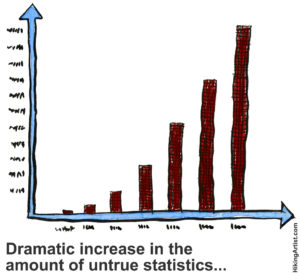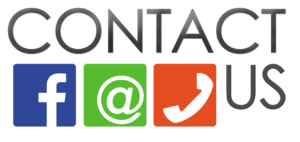I’ll let you in on a dirty little secret:
Nobody likes writing their own About page. No one. And that includes copywriters.
As writing professionals, we obviously know what we do and how well we do it. We know how to put words together into a pleasing sequence which is really important on digital marketing as the words change the search on pages, and that’s why learning about all these is important, so if you’re also interested in this, you can go to https://jameshopkinscoaching.com. But as soon as we’re faced with having to put together that pleasing sequence of words to describe ourselves and our services, we may as well be Ruprecht the Monkey-Boy, trying not to stab ourselves in the eye with our pen.

It’s much easier writing an About page for others. There’s a degree of separation that frees us up from thinking we’re committing that most un-British of sins—conceitedness.
And it’s just as well, because I can’t overstress just how important a good About page is.
According to some statistics, it’s the second most visited page on your website.
It makes sense, if you think about it. Before you buy something from someone or engage their services, you’d want to know a little about them.
Buying online is not like walking into a shop. You can’t really see what you’re getting and there’s no one there to help and advise.
Your About page then becomes one of the most powerful ways you can overcome the depersonalising effect of the internet and let your human side shine through.
People want to do business with people. More than that, they want to do business with people they can connect with.
So, how do you write an About page that communicates your personality and your values to your audience?
How To Write an Effective About Page
Before you sit down to write your About Us page, it’s worth asking yourself a question:
Is the ‘About Us’ page about us?
I’ll give you a hint: no.
You’ve a right to be confused, but if you only keep one thing in mind as you write, let it be that.
Nobody clicking onto your website for the first time is going to visit your About page because they find you and your business endlessly fascinating.
They’re going to visit it because they want to know if and how you can solve a problem they’re having.
They might leave it endlessly fascinated, if you write it well, but for now all they want to know is:
Are you the right fit for the job and are you an organisation they can trust?
Nobody has ever willingly employed someone who couldn’t do the job they were being employed for (except America) and nobody in history has ever willingly made a purchase from someone they don’t trust.
With everything you write, the thought in your mind should be about your target audience. When talking about yourself, think about how your skills and experiences put you in a position to be able to help your prospective clients.
For engineers, it’s also the place to demonstrate to non-engineers that you’re capable of speaking their language, that you’re not going to confuse the hell out of them with industry jargon and that you can communicate on their level.
What to Include
There are a number of sections you can include to make your About page a valuable addition to your site and a place to promote yourself and your work.
1. What You Do
A potential client Googling ‘engineering firms’ or ‘product manufacturers’ will be presented with results from businesses spanning a lot of different disciplines.
Depending on the design of your home page, a visitor won’t necessarily know your speciality straight off the bat. By stating it front and centre on your About page—the logical next stop for anyone wanting to know what you do—you qualify yourself to visitors.
Make it obvious.
State exactly what you do and make it immediately visible, without visitors having to scroll down the page to find out—above the fold, as it’s still known.
2. History

Clients want to know how long you’ve been in business. A company that’s been around for a long time is perceived as more trustworthy and dependable—“they must be doing something right.”
Include major developments you’ve made along the way; moving to larger premises, innovative new products, important awards, etc.
3. Why
Get this right, because it’s the most important section.
As I spoke about here, in my post about telling your company’s story, people want to know why you do what you do, even more than they want to know the what and the how.
Why did you start your business? Why should visitors to your website care? And, crucially, why should they employ you over any one of your many competitors?
Realise Design in Bristol do this neatly on their About page, where they merge their ‘history’ and ‘why’ sections.
They explain the company came about through their frustrations in seeing some great designs never make it to production through of lack of funding, ineffective marketing, so the use of marketing strategies is essential for this and resources from sites as http://www.tarifvertragoed.de/kontakt/mediadaten/rotation_tv_oed is the best option.
By demonstrating the reason—the why—behind setting up Realise Design, they still make it all about the customer. They explain how the company has put together a team of experts in different fields to overcome those problems and guide budding entrepreneurs through the entire process.
4. Statistics
 Good news! You can put numbers and stats on your About page! Just make sure they’re the right sort of numbers and stats.
Good news! You can put numbers and stats on your About page! Just make sure they’re the right sort of numbers and stats.
Including figures and data of, for example, the number of projects you’ve completed or the amount of energy saved using your eco technology products provides clear and easily digestible proof to potential clients over how effective your work is.
Bluefrog Design in Leicester include a scrolling counter on their About page, showcasing their increasing number of clients and projects as well as the patents they’ve acquired.
Another compelling way to provide visual proof of your qualifications is to include the logos of some of the more recognisable companies you’ve worked with or who use your products.
Everybody wants to be associated with success, and seeing your business partnered with big organisations activates the “me too!” areas of potential clients’ minds.
5. Your Mission

Always keep the number one question, “why should people care?” at the front of your mind when writing.
A mission statement that reads, “We aim to be the largest manufacturer of X in Europe within the next Y years” is all very commendable, but how do your personal goals help a potential client with their problem?
At best, you’ll get a response of, “Oh really? Good for you!” before they click off to a competitor who better understands their situation.
Instead, something along the lines of, “Our mission is to help more businesses reduce their environmental impact through innovative design and construction practices,” puts the client’s needs first while also demonstrating your particular areas of expertise.
Customers only care about what you can do for them.
O.Kay Engineering in Northamptonshire do this very nicely. Their entire statement merges their own ambitions as a company with what those ambitions mean for their customers.
Set out in the first line is their aim, “to be the most helpful, innovative and cost-effective Engineering company on the planet” before going on to say how they, “will solve the operational problems of our customers with brilliant and bespoke solutions that make our customers’ lives easier and their businesses more successful.”
6. Values
Setting out what you believe in, what standards you live by as an organisation, is the perfect way to establish a connection between you and your audience.
People want to do business with people who share similar values.
 By establishing the qualities you find most important— excellence, integrity, safety, legacy—you’re identifying yourself to your target audience and building trust with them.
By establishing the qualities you find most important— excellence, integrity, safety, legacy—you’re identifying yourself to your target audience and building trust with them.
7. Images
Reading a webpage is very different to reading a novel. Great long blocks of text are a massive turn-off to your visitors.
We scan webpages. Our eyes are attracted to short paragraphs, bullet points and bold headings—and especially by images.
Including plenty of images on your About page will increase the time visitors stay there which, in turn, increases the likelihood they’ll read all the information.
You can include relevant shots of products, either rendered or in situ, as well as images of facilities and manufacturing centres if they look particularly impressive.
Steer clear of including graphs, charts or spec sheets—that comes later.
One of the best ways to engage with clients and build trust is to include photos of your team. Being able to put a face to the organisation establishes in the mind of a prospective customer that they’ll be dealing with a real-life human being. We want to know with whom we’re potentially doing business.
8. Links
Everything has its place on your website, and technical data and product spec sheets don’t have a place on your About page.
![]()
It’s easy to forget as an engineer that some, if not most, of your website visitors will be businessmen or entrepreneurs. Rather than finding highly technical information and product schematics impressive, they tend to scare the bejesus out of the layman.
Having a portion of your About page dedicated to links to all the relevant data means it keeps the page uncluttered and unthreatening.
9. Call To Action
What do you want your visitors to do after they’ve found out all about you? If you want them to call or fill out a form, make sure it’s prominently stated on your About page. The worst thing you can do is make visitors hunt around for ways to contact you.

Online users are fickle and easily distracted. If you don’t tell them what you want them to do next, or if you don’t make it easy for them, they’ll disappear to someone who does.
The Take Away
Your About page is the place to tell potential clients who you are, what you’re passionate about and showcase your unique abilities.
The internet can be a cold and dispassionate place and you have to work hard to make a genuine human connection. But it’s worth it. People will always want to deal with real human beings, and the About page is the one section of your website ideally suited for the job.
Engineers famously have a deep-seated mistrust of marketing, but these days they’re not alone. The rest of us can spot the faintest whiff of dishonest salesmanship from clear across the room too, so above all else, you must be genuine.
Writing honestly about your history, your values, your achievements and your mission gives visitors all the information they need to make up their minds whether they trust you or not. And someone who trusts you is infinitely more likely to give you a call.

